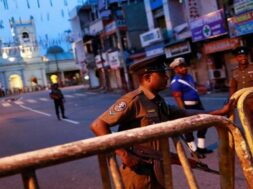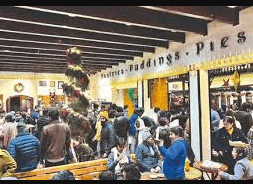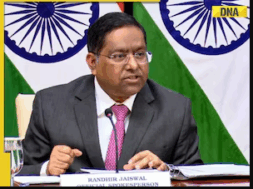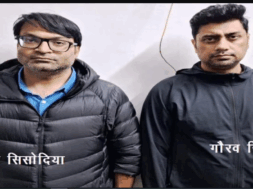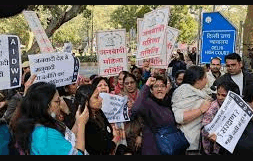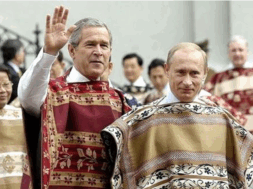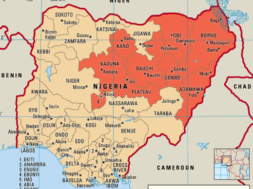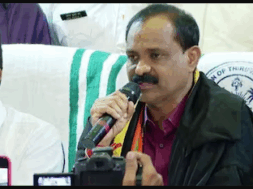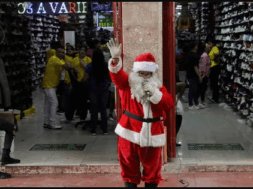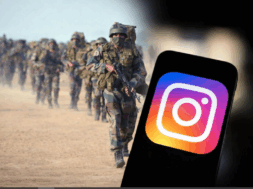
Nation-Wide Curfew in Sri Lanka, India Rush Aids
Manas Dasgupta
NEW DELHI, April 2: Grappling with the island nation’s worst-ever economic crisis, the Sri Lankan government on Saturday declared a state of emergency and imposed a 36-hour curfew in the entire country beginning from 6 P.M. on Saturday, even as India rushed aids to help the country tide over the situation.
“Under the powers given to the president curfew has been imposed countrywide from 6 p.m. on Saturday to 6 a.m. on Monday,” the government’s information department said after the President Gotabaya Rajapaksa declared a state of emergency on Friday to control the nation-wide agitation against the economic crisis.
India has rushed aids to help the island government tide over the situation. Lanka IOC, the subsidiary of Indian Oil Corporation in Sri Lanka, said Friday it would supply 6,000 MT of fuel to ease the power shortages. On Saturday, Indian traders said they were in the process of shipping 40,000 tonnes of rice to Sri Lanka. A ship carrying diesel from India has reached the Sri Lankan port.
Anger against Rajapaksa’s handling of a deepening economic crisis in the island nation of 22 million people spiralled into violence late on Thursday, as hundreds of protesters clashed with police for several hours. A severe shortage of foreign currency has left Rajapaksa’s government unable to pay for essential imports, including fuel, leading to debilitating power cuts lasting up to 13 hours.
The curfew has been imposed to prevent protests and Sri Lankans won’t be allowed to step out unless for essential services during the curfew. Diesel — the main fuel for buses and commercial vehicles — was unavailable at stations across the island, according to officials and media reports — crippling public transport. Owners of private buses — which account for two-thirds of the Sri Lanka’s fleet — said they were already out of oil and that even skeleton services might not be possible after Saturday.
Sri Lanka’s President Gotabaya Rajapaksa declared a state of emergency on Friday, giving sweeping powers to security forces. In an order late on Friday, the President invoked tough laws that allow the military to arrest and detain suspects without warrants. The state of emergency was necessary to protect public order and to maintain essential supplies and services, he said in a proclamation.
The country’s former president Maithripala Sirisena’s Freedom Party has called on President Gotabaya Rajapaksa to form an all-party government to tide over the crisis. Rajapaksa invoked the tough laws allowing the military to arrest and detain suspects for long periods without trial as demonstrations calling for his ouster spread across the island nation.
Angered by shortages of fuel and other essential items, hundreds of protesters came out on the streets and clashed with police and the military outside Rajapaksa’s residence as they called for his ouster and torched several police and army vehicles. Police arrested 53 people and then imposed a curfew in and around Colombo on Friday to contain other sporadic protests.
The southern towns of Galle, Matara and Moratuwa also saw anti-government protests, and similar demonstrations were reported in the northern and central regions. All held up traffic on main roads. Rajapaksa’s office said the protesters wanted to create an “Arab Spring” — a reference to anti-government protests in response to corruption and economic stagnation that gripped the Middle East more than a decade ago.
One of the President’s brothers, Mahinda, serves as Prime Minister while the youngest, Basil, is Finance Minister. His eldest brother and nephew also hold cabinet positions. Sri Lanka’s predicament has been compounded by the COVID-19 pandemic, which torpedoed tourism and remittances. Many economists also say the crisis has been exacerbated by government mismanagement and years of accumulated borrowing.
Reacting to the state of emergency, American Ambassador to Sri Lanka Julie Chung said: “Sri Lankans have a right to protest peacefully – essential for democratic expression.” “I am watching the situation closely, and hope the coming days bring restraint from all sides, as well as much needed economic stability and relief for those suffering,” she tweeted.
Highlighting the severe shortage of foreign currency, a vessel carrying 5,500 metric tonnes of cooking gas has had to leave Sri Lankan waters after Laugfs Gas, the company that ordered it, was unable to procure $4.9 million from local banks to pay for it. “People are struggling with an acute shortage of cooking gas but how can we help them when there are no dollars? We are stuck,” Laugfs Gas Chairman W. H. K. Wegapitiya said.
The ongoing crisis has marked a sharp turnaround in fortune for Rajapaksa, who swept into power with a majority win in 2019 promising stability. The government has said it is seeking a bailout from the International Monetary Fund and is also asking for fresh loans from India and China.
In the first major food aid to the country since Colombo secured a credit line from New Delhi, Indian traders have started loading 40,000 tonnes of rice. Shops opened in Sri Lanka’s capital city Colombo amid tight security on Saturday – the first day after a state of emergency was declared to tackle growing unrest amid an unprecedented economic crisis.
The arrival of refugees from Sri Lanka in Rameswaram last week has only underlined the serious economic crisis playing out in the island nation. Since the three-decade long civil war ended in 2009, this is the first time refugees have arrived on the Tamil Nadu coast. Those who landed in Rameswaram said they were forced to flee the country because food and work had become scarce in towns and villages. Newspapers have suspended publication due to shortage of newsprint and food inflation has shot up dramatically.
Reports point to a bleak scenario with the Rajapaksa government forced to deploy security personnel at petrol pumps to manage the fuel ration: Street protests have become a regular feature as people struggle to make ends meet. India could expect an influx of economic refugees if the situation deteriorates. This is the backdrop of Foreign Minister S Jaishankar’s Sri Lanka visit that began on Monday — both countries are expected to sign agreements, including in defence and maritime security. This is a follow up to the $2.4 billion financial aid India has extended over the past few months.
At the heart of the crisis is Sri Lanka’s mounting debt, which has drained the country of foreign currency, so much so that it can’t even pay for fuel and foodgrain imports. Tourism, the bedrock of the Sri Lankan economy, was hit badly, first by the Easter bombings in 2019 and then, the Covid pandemic.
